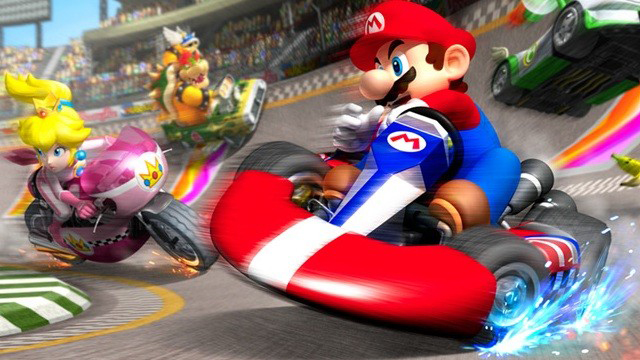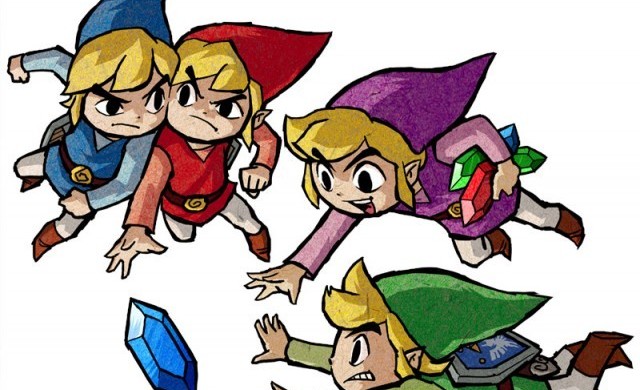
Nintendo’s past online multiplayer services have been a little hit and miss, to say the least. The Nintendo Wi-Fi Connection service was set up for Wii and DS to play compatible online multiplayer games, as well as offering access to downloadable content via the Wii and DSi Shops. A variety of issues stunted the service: poorly implemented Wi-Fi technology inside the Wii and DS, horrendous latency issues that hampered gameplay, and the cumbersome Friend Codes all helped in the eventual closure of the service.
But does all this really matter?
There was a time before online multiplayer when it was simply known as… multiplayer. Playing with (or against) your friends meant meeting up, sitting in the same room, and playing each other, face-to-face. There was no need for any Wi-Fi witchcraft or Internet shenanigans– just some good friends, a few extra controllers, and a comfy couch were enough.
If ever a conversation arises with my friends about their favourite games, you can guarantee most of the titles that make their list do so because of the countless hours spent on some split-screen affair, humiliating their friends with their many victories and having the pleasure of seeing their defeated faces in the process.
Below are just a handful of some of the best and most innovative multiplayer games on Nintendo’s systems that may have started the odd argument or two in your household, before online gaming took all your friends away!
Double Dragon II: The Revenge (NES)
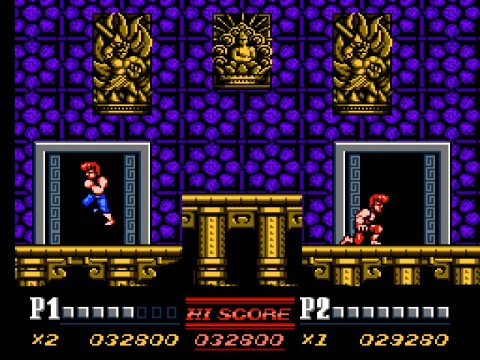
The original Double Dragon on NES was actually one of the many reasons I wanted to own the system. The game was featured in a film called The Wizard, starring 1980s childhood star Fred Savage. As soon as I saw it (and the shameless plug for Super Mario Bros.3), I knew that Sega could stick its Master System where the sun doesn’t shine; NES was the console for me. So imagine my disappointment when I finally got Double Dragon home, fired it up, my friend clutching controller two in anticipation, only to find there was no co-op play! This was a sad day indeed.
However, all would soon be forgiven when, in 1990, Acclaim released Double Dragon II: The Revenge. Finally, my friend and I could play as Billy and Jimmy Lee, taking on the black warriors together to avenge my beloved Marian’s death.
It may seem archaic now, but in 1990, on an 8-bit home console, being able to play cooperatively was just simply amazing. Contra for NES had already covered this ground on its US release in 1988, but the unfortunate people in the UK and Europe had to wait another two years before we were able to play the PAL version of Konami’s masterpiece.
The Legend of Zelda: Four Swords Adventures (Nintendo GameCube)
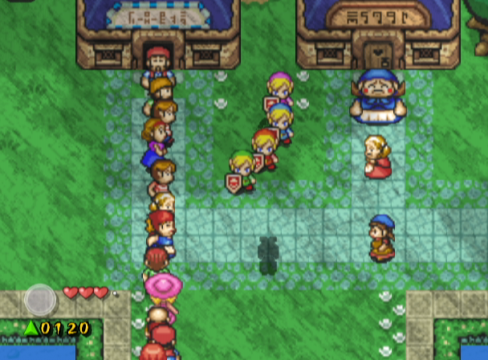
The original version of Four Swords appeared as an additional game on the 2002 release of The Legend of Zelda: A Link to the Past for Game Boy Advance. This was a multiplayer-only game and required between two and four players to work co-operatively to solve puzzles and complete various tasks.
The definitive version for me, however, was in 2004 when Four Swords Adventures was released as a stand-alone game for GameCube. Not only did this have a new single-player mode for the friendless among us, but it retained the four player co-op of the original version and utilized up to four GBA systems by connecting to the GameCube using the GCN-GBA link cable, which was bundled with the game. This meant that you and three of your friends could all play as a version of Link, on your own GBA screen, as well as the action also taking place on the main TV screen.
It wasn’t just a gimmick either. The gameplay featured a host of puzzles that required you all to work together to advance through the main campaign, but also retained a competitive element that meant collecting as many rupees and gems as you could to beat your fellow players. Couple this with the frantic Shadow Battle mode that pits you against your fellow Links in an all-out brawl and you have an amazing and technically brilliant multiplayer game.
GoldenEye 007 (N64)
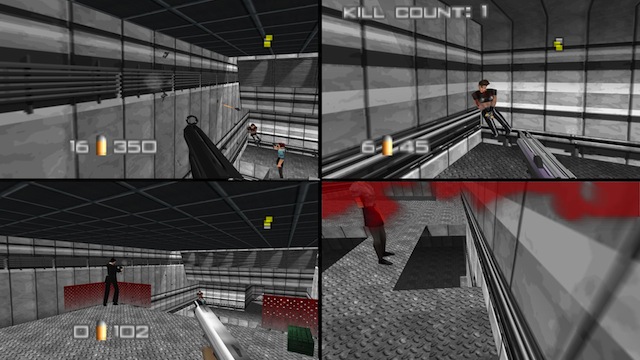
If there was only one reason why Nintendo 64 had four controller ports on the front of the console, it was because of this game. Released in 1997, GoldenEye earned itself legendary status amongst the first-person shooter genre, claiming many awards and accolades that have helped cement its status as one of the greatest shooters of all time. The game is also credited as a pioneer of the console multiplayer deathmatch. Considering that the multiplayer option was an afterthought during development, this is quite something.
Allowing up to four players to compete in five unique types of deathmatch, players ran around varying maps that were adapted from levels from the main campaign– more of which could be unlocked as you progressed further in the single-player mode. The types of deathmatch were well thought out too, with most of the matches named after previous Bond films and each incorporating the title into its gameplay. A particular highlight included The Man with the Golden Gun, which had players racing to a single golden gun placed somewhere on the map; the holder of said gun then had the ability to kill with one shot, but at the cost of not being able to pick up any body armour.
Where GoldenEye really excelled for many was in its ability to customize each match. This meant that you could include or omit certain weapons, change the map, or even change the way a match was won. So, given all the customizable options and weapons of choice, what would make a really good deathmatch? Oh, go on then… four-way, slappers only!
Mario Kart (Various Consoles)
As this series is so huge and so brilliant with each incarnation, I couldn’t pick out one specific installment. Each entry in the series has its own merits, particularly when it comes to multiplayer.
Super Mario Kart on SNES started it all, released in 1992 and receiving critical acclaim for its all-new approach to console racing games; not only did it have an excellent single-player game, but it also had an amazing multiplayer offering that has remained with the series. Aside from the usual two player head-to-head racing, the SNES version also gave us Battle Mode, involving two players pitting it out in a closed arena, protecting the three balloons that circled their kart whilst attempting to burst all three of their opponent’s.
Later releases of the franchise managed to evolve an already brilliant multiplayer experience, such as N64’s Mario Kart 64, introducing four-player head-to-head and battle mode via split screen for the first time in a Mario Kart title. Game Boy Advance owners were treated to the first ever Mario Kart handheld game, Mario Kart: Super Circuit, with the added benefit that four-player multiplayer was possible with only one cartridge, and the GCN version, Mario Kart: Double Dash!!, featured two player co-operative play during the games main Grand Prix races. As such, the series has been dubbed one of Nintendo’s greatest multiplayer experiences to date.
Wii Sports (Wii)
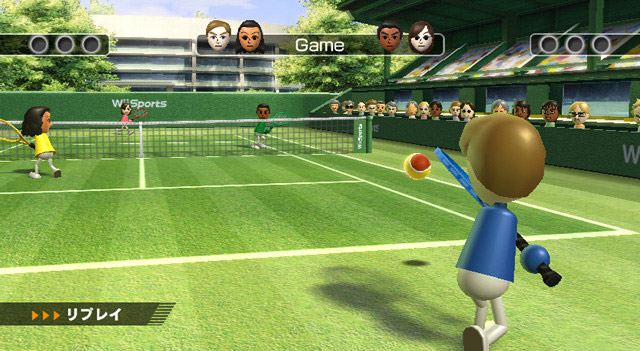
I actually could not believe the sales figures for Wii Sports when I first saw them. 82.69 million copies sold worldwide! What’s even more unbelievable is that these figures are as of the end of March 2015– only two months ago as I write this article. Wii Sports is still selling!
Okay, so the game was included with the Wii console upon release, but the figures are still hugely impressive. It seems that keeping things simple and accessible for gamers and non-gamers alike pushed Wii Sports from being just another launch title to the second biggest game of all time, second only to Tetris.
The game had five sports games that used the Wii Remote to mimic the various actions of each sport: baseball, boxing, bowling, golf, and tennis. Although all games were multiplayer, admittedly it was only really baseball, boxing, and tennis that would involve two or more players simultaneously. The golf and bowling games were simply turn-based due to the nature of the sports, but still excellent in their own right.
The multiplayer aspect of Wii Sports was nothing new. Any sports game naturally commanded at least a two-player option, pitting one against another. However, the genius of Wii Sports was in that “other” person you were usually playing. Because of its simplicity, you were often playing against your mum, dad, grandma, grandpa, anyone who could wave that funny little Wii Remote about. Even your little three-year-old nephew, who embarrassed you that time in front of the whole family that one Christmas, beating your on-screen Mii to a pulp in a boxing match. Oh, the shame!
Super Smash Bros. (Various Consoles)
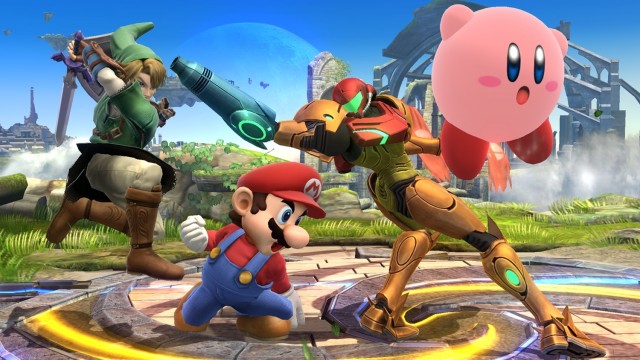
If it turned out there was actually two reasons why Nintendo 64 had the four controller ports, aside from GoldenEye, this would probably be the other. The original Super Smash Bro.s debuted on N64 in 1999 and was originally intended solely for the Japanese audience. Fate, it seems, had its part to play and thankfully due to huge sales in Japan, the title got its worldwide release.
Maintaining a more simplistic approach to the fighting genre, all the games in the series use only two buttons to attack, along with the directional controls, which determines the type of move you pull off. This gives each character a vast array of air, ground, and special attacks that can be strung together to pull off huge combos relatively easily, without any required hand acrobatics commonly found in more traditional fighters. Put all this together with a huge roster of Nintendo’s most famous icons and a smattering of licensed third party characters and you have yourself one of the finest, most accessible multiplayer fighting games on any system.
Now, five games on, Smash is as popular as ever, and much of its credit is owed to its multiplayer modes. It’s true that the newest outings on 3DS and Wii U will probably turn its focus to online multiplayer match-ups, but there is no denying that Smash’s multiplayer roots are firmly with local multiplayer– so much so that the series has spawned an entire community of competitive gamers that play Smash in high profile gaming tournaments, with a preference for Super Smash Bross Melee on GameCube. It’s worth noting that MLG’s (Major League Gaming) tournament roster featured Melee from 2004 to 2007. In 2010, they changed it to Super Smash Bros. Brawl on Wii, only to change it back to Melee by popular demand in 2014– surely a testament that the oldies are indeed the best!
In 2013, Shigeru Miyamoto stated that online multiplayer simply wasn’t Nintendo’s focus, preferring a more “comfortable play experience with people in the same room.” I hope that some of the games mentioned in this article echo his comment. However, two years later and with the much anticipated release of online multiplayer shooter Splatoon on the horizon, is Nintendo’s focus now changing? As usual, let us know in your comments.




 ShareThis
ShareThis